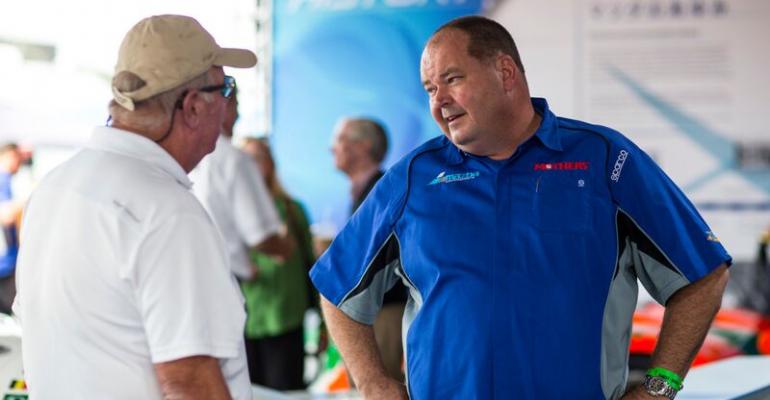SAN DIEGO – Mazda makes vehicles that win praise.
Accolades range from the CX-9 fullsize CUV’s 2.5L turbocharged engine making this year’s Ward’s 10 Best Engines to Consumer Reports giving 100% recommendations to every Mazda it tested. (Getting CR’s all-in as well are Porsche and BMW. “We’re in good company there,” says Robert Davis, senior vice president-special assignments for Mazda North American Operations.)
Mazda also touts getting high average transaction prices in every segment it competes in. And its demographics averages are strong for customer income ($93,000) and schooling (74% college-educated).
But the Japanese brand has work to do regarding vehicle sales in the U.S.
Mazda sold 297,773 units in 2016, off 6.7% from the year before, according to WardsAuto data. That put Mazda near Volkswagen, which saw a 7.6% drop in deliveries as it grappled with its emissions-scam scandal. No brands came close to loser-of-the-year Fiat. It saw a 23.7% drop in year-over-year sales.
MNAO President and CEO Masahiro Moro shuffled leadership positions following Mazda 2016’s sales performance at a time when industrywide deliveries hit a record 17.46 million units. He did so “in order to seize more than our share” of the market, he said in a statement announcing the reorganization.
But the company vows it will not resort to whatever it takes to boost sales.
“We are not chasing volume; we’ve done that before,” Jeremy Barnes, MNAO’s director-public relations and brand experience, tells WardsAuto here at a press event showing two vehicles: the ’17 CX-5 midsize CUV and a retractable hardtop version of the MX-5 Miata roadster.
“We are not going to beat Toyota and Honda at their own game,” he says. “We want to play our game. Our approach is less ‘price, price, price’ and ‘deal, deal, deal.’ That’s one reason to go to ‘Mazda Premium.’”
That doesn’t mean Mazda is venturing into luxury segments. Instead, it refers to a product-development effort to stay mainstream, yet go upmarket with features, craftsmanship and quality that consumers will pay more for.
Another part of Mazda’s premium project is to establish closer ties with customers so they will stay loyal to the brand and refer it to others. Dealers play a vital role in that cause, Davis says.
“Our 600 retailers are responsible for fostering great customer relations, but we have to help them by offering vehicles that make emotional connections,” he says. “Most people’s definition of premium refers to price. That’s not our definition. Ours is great cars and a great customer experience.”
Mazda’s North American 7-vehicle lineup consists of three CUVs (CX-3, CX-5 and CX-9), two sports cars (the MX-5 soft-top convertible and the RF version) and two cars (Mazda6 and Mazda3).
Mazda efforts to distinguish its products include its SKYACTIV engineering and Kodo design language. The former is a system to improve fuel economy and boost engine output. The latter aims to capture traditional Japanese design that is simple and stunning at the same time.
Based in Hiroshima, Mazda’s global market share is 2%. North America is its biggest market, representing 30% of sales.
The automaker is trying to take advantage of its relative smallness, Davis says. “The size of the company is such that we can focus on building that close relationship with customers.” As a little guy, “we’re comfortable being who we are,” he says.
Ford once owned a 33% stake in Mazda, but reduced that to 13% in the recessionary year of 2008, then pulled its stake completely a few years later.
The recession hit the auto industry hard. Mazda took its share of punches, including the Ford pullout.
Davis doesn’t act like a doom-and-gloom auto executive, but he’s been in the industry more than 30 years and notes its cyclical nature.
“The next shock to the industry is not a question of if but when,” he says, adding that Mazda Premium and cozy customer relations can help cushion the blow. “If you look at the (last) recession, the cars that had sparked emotional connections were the ones that recovered quicker. That’s a key to dealing with the next downturn.”





